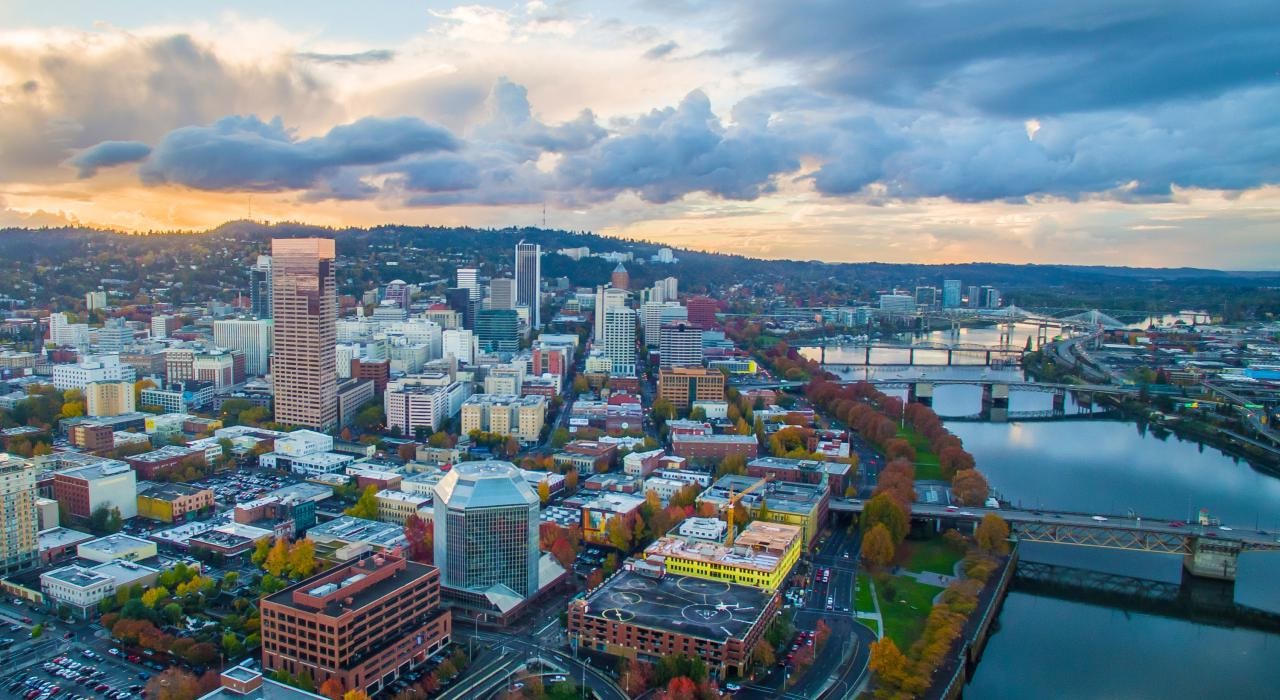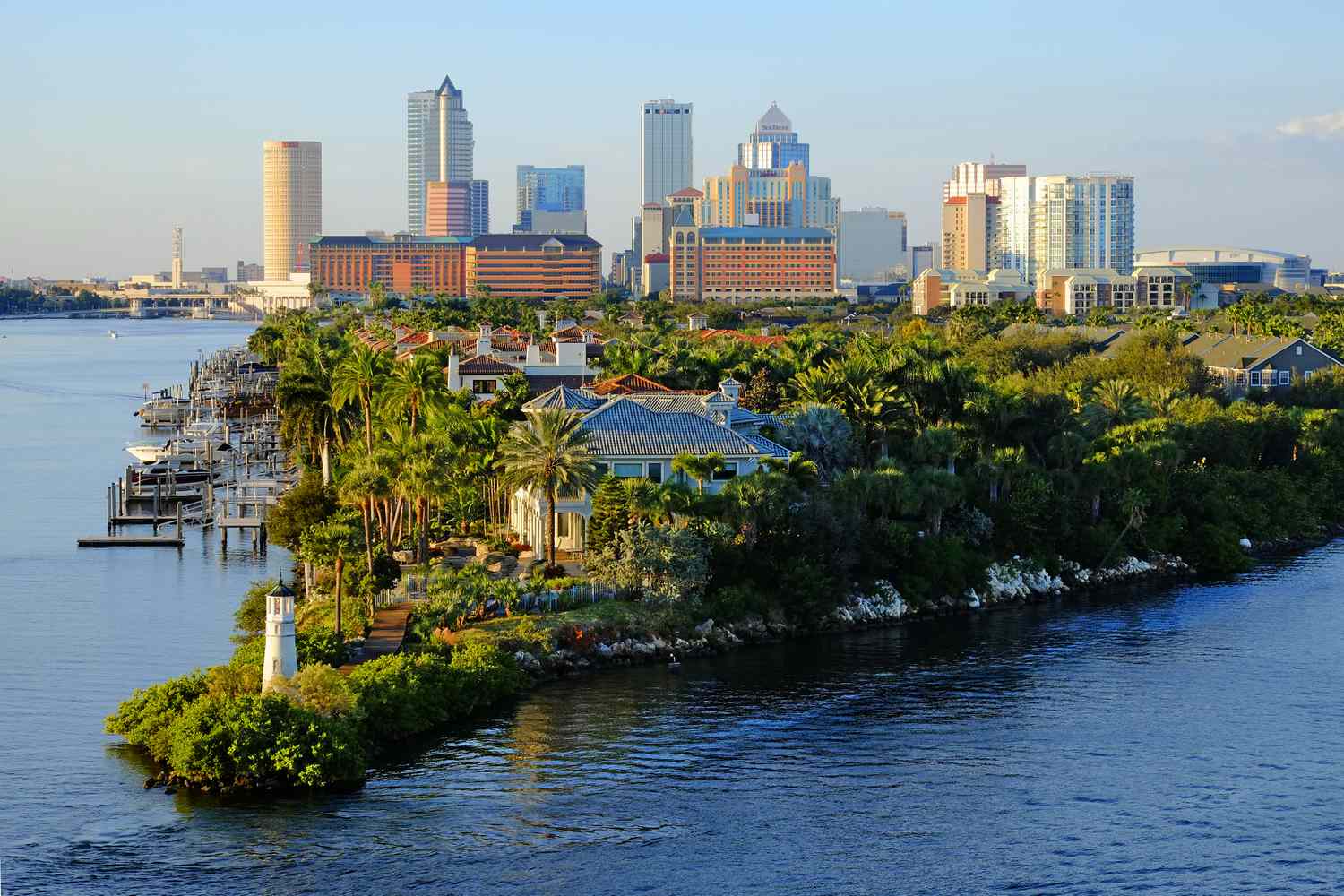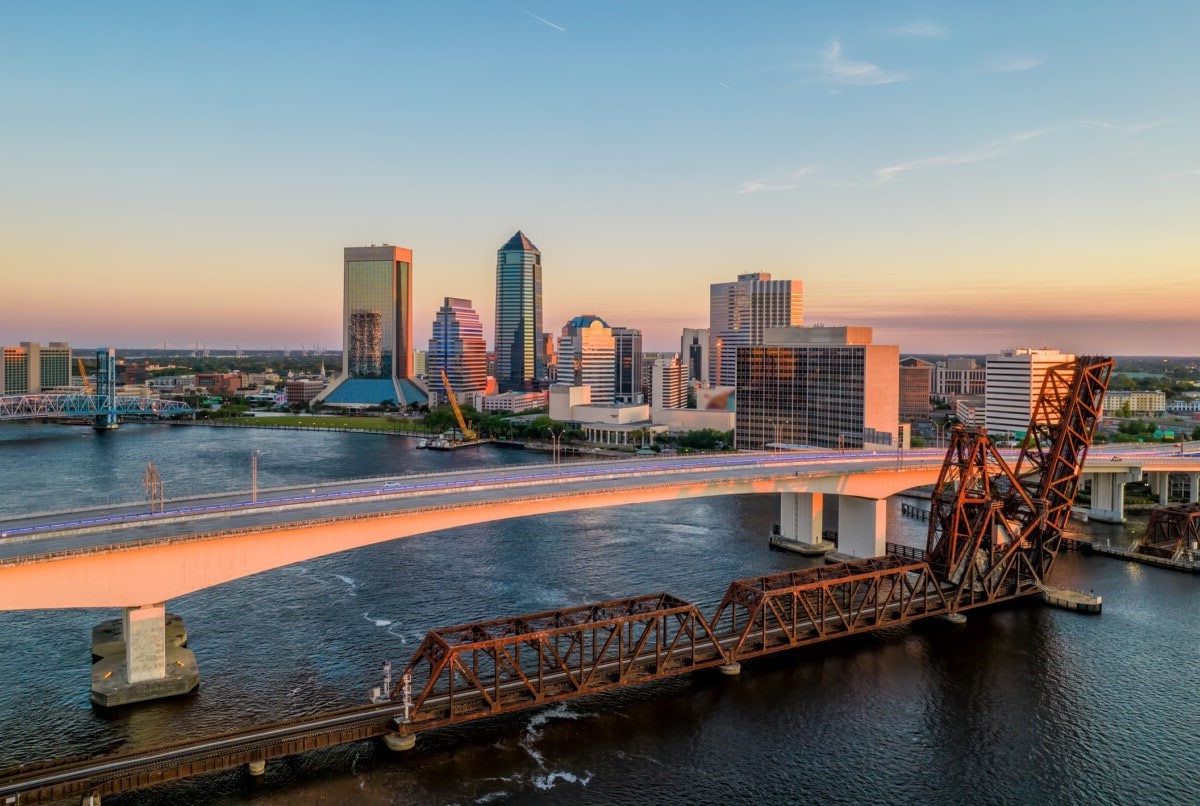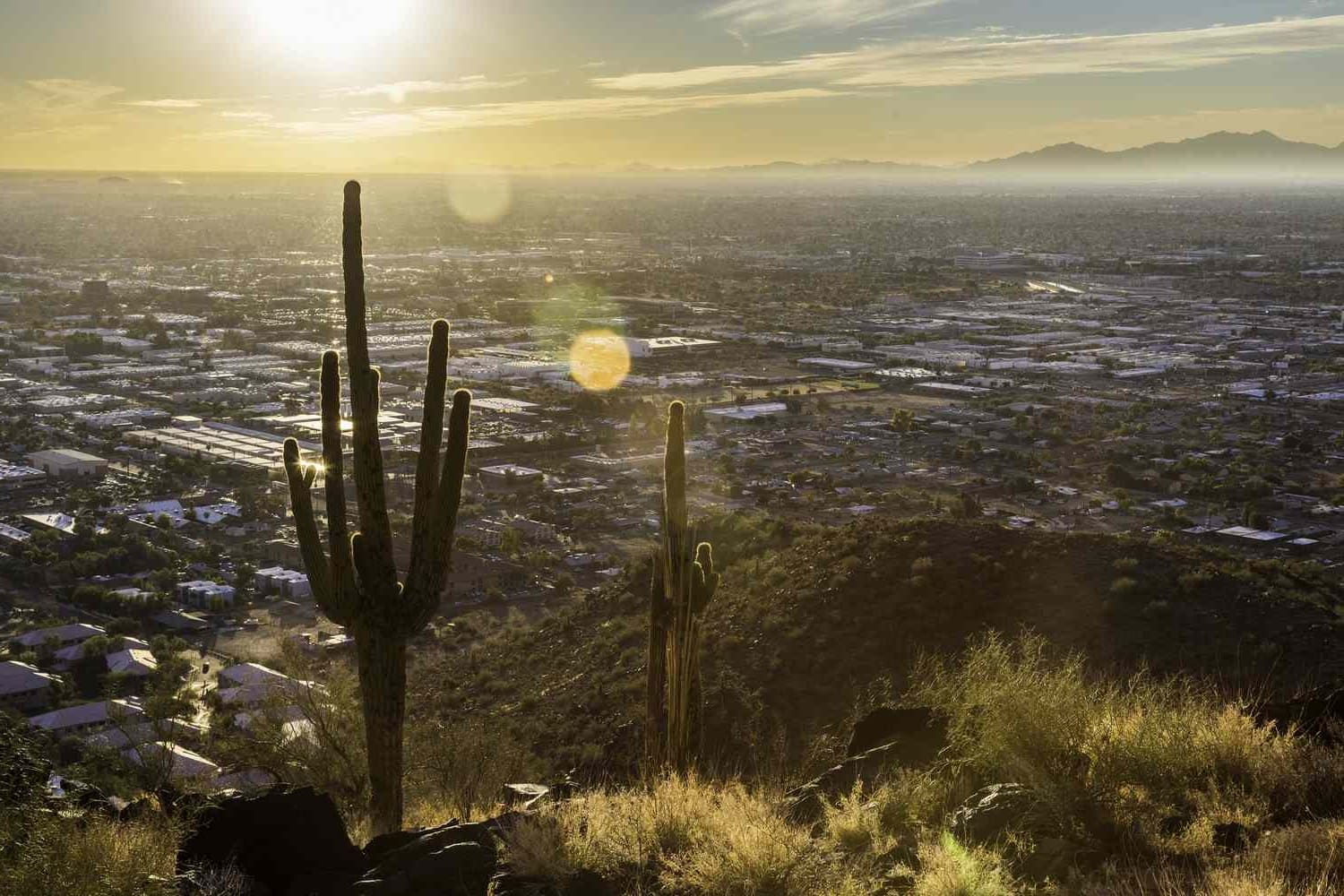Home>Weather and Climate>Portland Monthly Average Temperatures


Weather and Climate
Portland Monthly Average Temperatures
Published: April 13, 2024
Discover the average temperatures in Portland throughout the year. Plan your visit with insights into the weather and climate in the city. Explore Portland's seasonal variations.
(Many of the links in this article redirect to a specific reviewed product. Your purchase of these products through affiliate links helps to generate commission for Temperatures.com, at no extra cost. Learn more)
Table of Contents
Introduction
Portland, Oregon, is renowned for its diverse climate, characterized by distinct seasonal variations that contribute to the city's unique charm. Understanding the monthly average temperatures in Portland is essential for residents, visitors, and businesses alike. From the crisp chill of winter to the balmy days of summer, Portland's temperature fluctuations shape daily life and influence a myriad of activities.
Throughout the year, Portland experiences a fascinating interplay of weather patterns, resulting in a rich tapestry of temperatures. Exploring the monthly average temperatures provides valuable insights into the city's climate dynamics, enabling individuals to make informed decisions and adapt their plans according to the prevailing weather conditions.
As we delve into the intricacies of Portland's monthly average temperatures, we will uncover the factors that influence these variations, examine historical trends, and consider the impact of climate change on the city's temperature patterns. By gaining a deeper understanding of Portland's temperature fluctuations, we can appreciate the city's climatic nuances and prepare for the diverse weather scenarios that each month brings.
Let's embark on a captivating journey through the ebb and flow of Portland's monthly average temperatures, discovering the captivating interplay of nature's elements and the profound influence they exert on the city's atmosphere.
Read more: Portland’s Highest Recorded Temperature
Understanding Monthly Temperature Variations
Portland's monthly temperature variations offer a captivating insight into the city's climatic rhythm, reflecting the intricate dance of nature's elements throughout the year. Each month brings a unique blend of temperatures, shaping the experiences and activities of Portland's residents and visitors.
In January, the city experiences the peak of winter, with average temperatures hovering around 45°F during the day and dropping to around 35°F at night. The crisp chill in the air creates a picturesque winter wonderland, inviting residents and visitors to savor the seasonal delights while embracing the cozy ambiance of indoor gatherings.
As February unfolds, Portland begins its gradual transition towards spring. Average temperatures start to climb, reaching around 50°F during the day and settling at approximately 38°F at night. The city's landscape undergoes a subtle transformation, with hints of greenery emerging amidst the remnants of winter, signaling the imminent arrival of spring.
March heralds the arrival of spring in full bloom, with average temperatures rising to around 57°F during the day and maintaining a pleasant 42°F at night. The city bursts into life as vibrant blossoms adorn the streets, and outdoor activities become increasingly popular, drawing residents and visitors to bask in the gentle warmth of the season.
April sees a further uptick in temperatures, with average daytime highs reaching approximately 61°F and nighttime lows settling at around 45°F. Portland becomes a tapestry of color as flowers bloom in abundance, and the city's parks and gardens become enchanting havens for leisurely strolls and outdoor gatherings.
May brings a delightful crescendo of springtime splendor, with average temperatures peaking at around 68°F during the day and maintaining a comfortable 50°F at night. The city's atmosphere is imbued with a sense of vitality and renewal, inspiring residents and visitors to revel in the balmy weather and partake in a myriad of outdoor pursuits.
June marks the onset of summer, with average temperatures soaring to approximately 74°F during the day and remaining a pleasant 55°F at night. Portland becomes a hub of outdoor festivities and recreational pursuits, as the city's parks and waterfront areas beckon individuals to embrace the sun-drenched days and balmy evenings.
July sees the height of summer, with average daytime temperatures reaching around 81°F and nighttime lows settling at approximately 58°F. The city resonates with the joyful hum of outdoor events and gatherings, offering a plethora of opportunities to savor the warmth of the season and partake in a diverse array of summertime activities.
August maintains the summer's embrace, with average temperatures hovering around 81°F during the day and settling at approximately 58°F at night. Portland's outdoor spaces continue to teem with life as residents and visitors immerse themselves in the myriad of cultural, recreational, and culinary experiences that the city has to offer.
September ushers in the transition to autumn, with average temperatures gradually tapering to around 75°F during the day and settling at approximately 53°F at night. The city's landscape undergoes a subtle metamorphosis, as the vibrant hues of fall begin to grace the surroundings, offering a picturesque backdrop for outdoor excursions and leisurely pursuits.
October marks the peak of autumnal splendor, with average temperatures reaching around 63°F during the day and maintaining a comfortable 47°F at night. Portland becomes a tapestry of golden hues, inviting residents and visitors to revel in the breathtaking beauty of the season and partake in a myriad of fall-themed activities.
November brings a gradual descent into winter, with average temperatures tapering to around 52°F during the day and settling at approximately 41°F at night. The city's ambiance exudes a sense of tranquility as residents and visitors embrace the cozy allure of indoor gatherings and seasonal festivities, marking the prelude to the winter months.
December envelops Portland in the embrace of winter, with average temperatures hovering around 45°F during the day and dropping to around 35°F at night. The city becomes adorned with festive decorations and a palpable sense of warmth, as residents and visitors come together to celebrate the holiday season amidst the enchanting wintry backdrop.
As we traverse through the mosaic of Portland's monthly temperature variations, we gain a profound appreciation for the city's climatic tapestry, each month weaving a unique narrative that shapes the experiences and rhythms of life in this vibrant metropolis.
Factors Influencing Portland's Average Temperatures
Portland's average temperatures are influenced by a myriad of factors, each contributing to the city's climatic nuances and seasonal variations. These factors play a pivotal role in shaping the ebb and flow of temperatures throughout the year, reflecting the intricate interplay of natural elements and atmospheric dynamics.
-
Geographical Location: Situated in the Pacific Northwest, Portland's proximity to the Pacific Ocean and the Cascade Range significantly influences its average temperatures. The moderating effect of the ocean tempers extreme temperature fluctuations, contributing to the city's relatively mild climate. Additionally, the Cascade Range acts as a barrier, impacting the movement of air masses and precipitation patterns, thereby shaping Portland's temperature dynamics.
-
Elevation: Portland's elevation, nestled between the Cascade Range and the Coast Range, contributes to its temperature variations. Areas at higher elevations within the city experience cooler temperatures, while lower-lying regions may exhibit slightly warmer conditions. This elevation diversity adds a layer of complexity to Portland's temperature landscape, creating microclimates within the city.
-
Maritime Influence: Portland's proximity to the Pacific Ocean infuses the city's climate with maritime influences. The ocean's proximity moderates temperature extremes, resulting in mild winters and relatively cool summers. The maritime influence also contributes to the city's precipitation patterns, shaping the overall climatic character of Portland.
-
Air Masses and Fronts: The movement of air masses and the interaction of weather fronts play a significant role in determining Portland's average temperatures. The arrival of maritime air masses from the Pacific Ocean brings moisture and moderates temperatures, while the influence of continental air masses can lead to temperature fluctuations, particularly during transitional seasons.
-
Urban Heat Island Effect: As a bustling urban center, Portland experiences the urban heat island effect, wherein the city's infrastructure and human activities contribute to localized temperature variations. Urban areas tend to retain heat, leading to slightly higher temperatures compared to surrounding rural areas, especially during the night.
-
Vegetation and Land Use: Portland's green spaces and urban forestry contribute to its temperature dynamics. Vegetation provides shade and evapotranspiration, which can mitigate the urban heat island effect and influence local temperatures. Additionally, land use patterns, such as the presence of parks and green corridors, can impact temperature distribution within the city.
-
Seasonal Variability: The seasonal progression from winter to summer brings distinct temperature variations to Portland. The angle of the sun, daylight duration, and the position of the jet stream all contribute to the seasonal ebb and flow of temperatures, shaping the city's climate throughout the year.
Understanding the intricate interplay of these factors provides valuable insights into Portland's temperature patterns, enabling residents, urban planners, and meteorologists to anticipate and adapt to the city's diverse climatic conditions. As Portland continues to evolve, these factors will continue to shape the city's average temperatures, underscoring the dynamic nature of its climate.
Historical Trends in Portland's Monthly Temperatures
Over the years, Portland has witnessed intriguing historical trends in its monthly temperatures, offering a compelling glimpse into the city's climatic evolution. Historical data reveals a nuanced tapestry of temperature fluctuations, reflecting the interplay of natural variability and potential long-term climate shifts.
Examining historical trends unveils noteworthy patterns in Portland's monthly temperatures. Long-term records indicate subtle shifts in average temperatures, with potential implications for the city's climate resilience and adaptation strategies. These trends serve as valuable indicators, shedding light on the dynamic nature of Portland's weather dynamics and providing essential context for understanding contemporary temperature variations.
Historical temperature data also unveils the impact of natural climate phenomena on Portland's monthly temperatures. Events such as El Niño and La Niña exert influence, contributing to periodic deviations in temperature patterns. These climatic oscillations manifest in distinct temperature anomalies, shaping the city's monthly averages and underscoring the interconnectedness of global climate dynamics with Portland's local weather patterns.
Furthermore, historical trends offer insights into the potential influence of broader climate change on Portland's monthly temperatures. Analyzing long-term temperature records provides a lens through which to discern potential shifts in temperature norms, offering valuable perspectives on the city's vulnerability to changing climate dynamics. By examining historical trends, researchers and policymakers can gain a deeper understanding of the evolving climate landscape and its implications for Portland's environmental stewardship and resilience efforts.
As Portland continues to navigate the complexities of a changing climate, historical temperature trends serve as a crucial foundation for informed decision-making and proactive climate action. By delving into the historical nuances of monthly temperature variations, the city can harness valuable insights to bolster its adaptive capacity and foster sustainable strategies for mitigating the impacts of a shifting climate.
In essence, historical trends in Portland's monthly temperatures provide a compelling narrative of the city's climatic journey, offering a window into the past while illuminating pathways for a resilient and adaptive future.
Impact of Climate Change on Portland's Average Temperatures
The impact of climate change on Portland's average temperatures is a topic of increasing significance, reflecting the broader global trends in climatic shifts. As the specter of climate change looms large, Portland grapples with the implications of rising temperatures and evolving weather patterns, underscoring the urgency of proactive measures to address this pressing issue.
Climate change has the potential to exert profound effects on Portland's average temperatures, heralding a new era of climatic dynamics that may significantly alter the city's environmental landscape. The warming trend associated with climate change can manifest in elevated average temperatures across the city, potentially leading to more frequent and intense heatwaves during the summer months. This shift in temperature norms poses multifaceted challenges, impacting public health, energy demand, and the overall livability of the city.
Moreover, climate change can engender alterations in precipitation patterns, further influencing Portland's temperature regime. Changes in precipitation dynamics may result in shifts in humidity levels and cloud cover, affecting the diurnal temperature range and contributing to fluctuations in average temperatures throughout the year. These variations can have far-reaching implications for diverse sectors, including agriculture, water resource management, and urban planning, necessitating adaptive strategies to contend with the evolving climatic conditions.
The ramifications of climate change on Portland's average temperatures extend beyond meteorological considerations, permeating various facets of the city's socio-economic fabric. From impacts on outdoor recreation and tourism to implications for energy consumption and infrastructure resilience, the evolving temperature landscape underscores the interconnectedness of climate change with Portland's societal well-being and economic vitality.
As Portland confronts the challenges posed by climate change, concerted efforts to mitigate its impact on average temperatures are imperative. Embracing sustainable practices, enhancing urban green spaces, and implementing climate-resilient infrastructure are pivotal steps in fostering a more climate-resilient Portland. Additionally, community engagement, public awareness initiatives, and collaborative partnerships can catalyze collective action to address the multifaceted implications of climate change on the city's temperature dynamics.
In essence, the impact of climate change on Portland's average temperatures underscores the imperative of proactive measures to mitigate its effects and foster a climate-resilient city. By acknowledging the far-reaching implications of climatic shifts and embracing adaptive strategies, Portland can navigate the complexities of a changing climate while charting a sustainable path towards a resilient and vibrant future.
Read more: Average Monthly Temperature In Colorado
Conclusion
In conclusion, the monthly average temperatures in Portland encapsulate a captivating narrative of climatic diversity and seasonal dynamism. From the frost-kissed embrace of winter to the sun-drenched allure of summer, Portland's temperature variations weave a rich tapestry of atmospheric nuances, shaping the city's ambiance and influencing the daily rhythms of life.
Understanding the intricate interplay of factors that influence Portland's average temperatures is paramount in navigating the city's climatic landscape. The geographical location, elevation diversity, maritime influences, and seasonal variability collectively contribute to the captivating mosaic of temperature dynamics that define Portland's climate throughout the year.
Moreover, historical trends in Portland's monthly temperatures offer valuable insights into the city's climatic evolution, serving as a compass for understanding the interplay of natural variability and potential long-term climate shifts. By delving into historical nuances, Portland can harness valuable insights to bolster its adaptive capacity and foster sustainable strategies for mitigating the impacts of a shifting climate.
The impact of climate change on Portland's average temperatures underscores the urgency of proactive measures to address this pressing issue. As the city grapples with the implications of rising temperatures and evolving weather patterns, fostering a climate-resilient Portland becomes imperative. Embracing sustainable practices, enhancing urban green spaces, and implementing climate-resilient infrastructure are pivotal steps in navigating the complexities of a changing climate while charting a sustainable path towards a resilient and vibrant future.
In essence, the monthly average temperatures in Portland encapsulate the city's climatic journey, offering a window into the past while illuminating pathways for a resilient and adaptive future. By embracing a holistic approach to understanding and addressing temperature variations, Portland can fortify its environmental stewardship and cultivate a thriving, climate-resilient community for generations to come.














